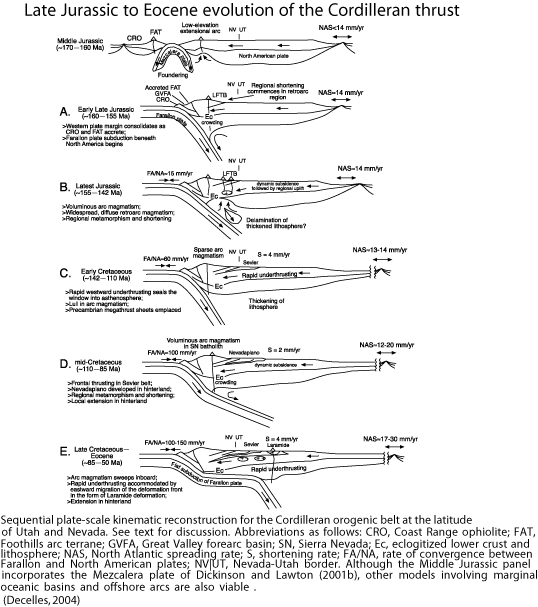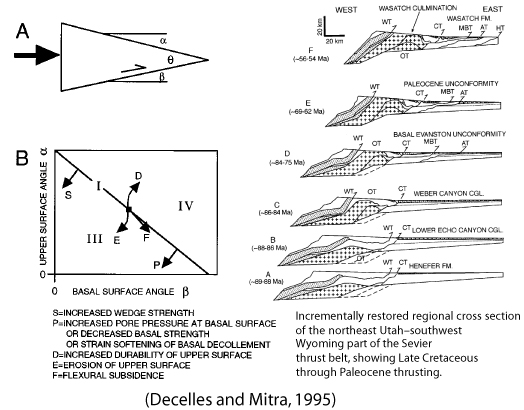

Sevier Orogeny!: The Cordilleran
Thrust System
The Sevier Orogeny is characterized by thin-skinned deformation where
only the upper crust consisting of Proterozoic to Mesozoic sequences and
formations accomodates horizontal compression from a convergent plate
boundary zone. The Farrallon Plate started subducting under the North
American craton west of the Sevier front when Pangea broke apart in the
early Mesozoic. Sevier timing is constrained from paleontalogical data,
sedimentation, magmatic events, and older strata overlapping younger strata.
Generally, the Sevier thrust system began in the Late Jurassic and ended
in the Eocene and can be traced from Mexico, through the western U.S.,
to Canada. Rates of shortening had increased from 1.4 -1.7 mm/yr in the
early to mid Cretaceous to 3 mm/yr in the late Cretaceous to early Tertiary
(Allmendinger, 1992) for an overall 50% shortening across the region (Erselev,
1993). The Sevier Orogeny is characterized by eastward progression of
a wedge of stacked strata.
Critical Taper Wedge Theory
Thin-skinned Sevier deformation is best described so far by the Critical
Taper Wedge Theory where the fronts of the Sevier thrusting forms a wedge
geometry with a taper at the underdeformed end. The deformation and advancement
of the wedge is controlled by the angles of the top and bottom slopes
of the taper (Decelles and Mitra, 1995). The angles then depend on the
basal shear strength, the internal strength, and upper surface weathering
and erosion rates (Decelles and Mitra, 1995).